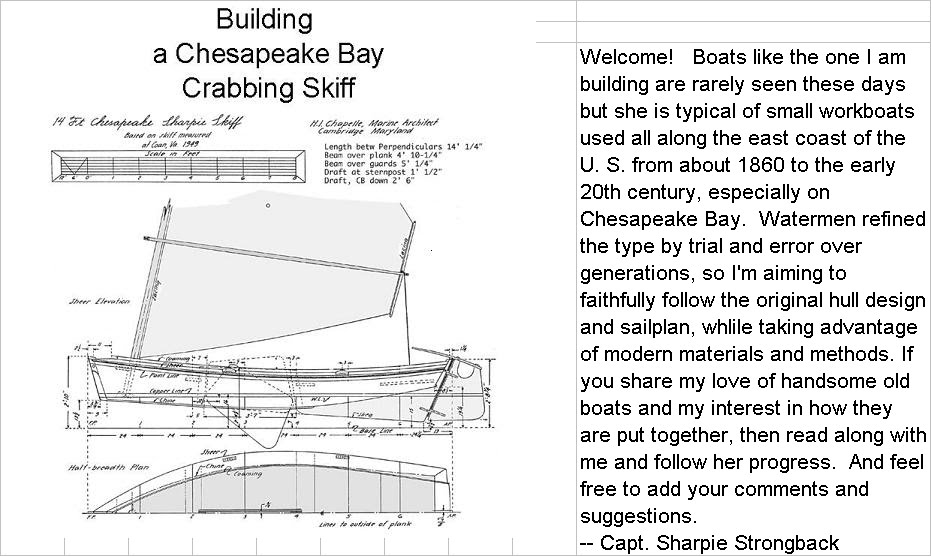Last Friday I had called on five local sailmakers epoxied board and trunk. One was a racing sail specialist, another was a name-brand sailmaker whose sails are made in China. At two places there was no one there to talk with so I left my contact info. The last visit, which turned out to be the most interesting, was to a local one-man loftweren't there, and the other is a local one-man loft. He showed interest in my boat; asked lots of questions, some of which I hadn't thought about; and quoted a fair price (not the lowest: that was the Chinese sail). His specialty is cruising sails, and he's been at it for many years. He seems to be the best choice for what I need. I pretty much decided on him, but I waited until Monday for the two callbacks. Tuesday I called him to give him the go-ahead. He made an appointment for Wed. morning to come take a look at the boat and particularly the mast. I think he didn't want to make the sail to the design specs only to find I had made the mast too short.
Actual work I got to on Tuesday included sealing the frames, mast step and thwart risers with epoxy. After that step I didn't want to make any sawdust. In the future I'll try to schedule epoxy, paint, and varnish should for late in the day when I'm also cutting or sanding.
 Anyway, I moved well away from the work site to build a router "table" so I can use that tool outside. The table consists of a panel of 12mm marine plywood with a hole for the router bit and countersunk bolts through the panel into the router's face plate. Tomorrow I'll put the table to the test.
Anyway, I moved well away from the work site to build a router "table" so I can use that tool outside. The table consists of a panel of 12mm marine plywood with a hole for the router bit and countersunk bolts through the panel into the router's face plate. Tomorrow I'll put the table to the test.Wednesday, Sept. 15:
Today started with the temperature in the high 70's: the coolest morning since we got back home at the beginning of August.
The sailmaker arrived mid-morning with a tape measure and a list of questions. Besides verifying the mast is to spec, we discussed what halyard and downhaul hardware be mounted on the mast, how the sprit and club will be rigged, how the luff of the sail will lace to the mast, and how the sail will be reefed. He wants to make the sail in stages, and meet with me after the sail is rough sewn to agree on the finishing details. He says it will only take a few weeks to make the sail, which would probably be sooner than I'm ready for it. Choosing a sailmaker is a big decision, but I feel confident about it.
My target for this phase of the boat's construction is to get the centerboard trunk and thwarts made, then mate them up and attach them. The centerboard trunk is the most time consuming part, so today I got out the remaining parts of the trunk. I cut a 2x8 yellow pine board to length for the trunk logs (fore and aft pieces on the bottom of each side of the trunk), the caps (fore and aft alongside the top edges of the trunk), and the headledges (spacers between the two sides). I ripped the pieces to rough width on the table saw. I predrilled the logs for the bolts which will secure them through the bottom. Then ran all the pieces through the thickness planer to get them smooth and to the precise right thickness and width. Exception: I left final thickness planing of the headledges until I'm finished with the centerboard and trunk sides. Then I got out my new portable router table and rounded off the edges of the logs and caps which will be exposed. The router table worked perfectly. Finally today, I sanded the mast where I had filled some imperfections. No photo ops in today's work.

No comments:
Post a Comment